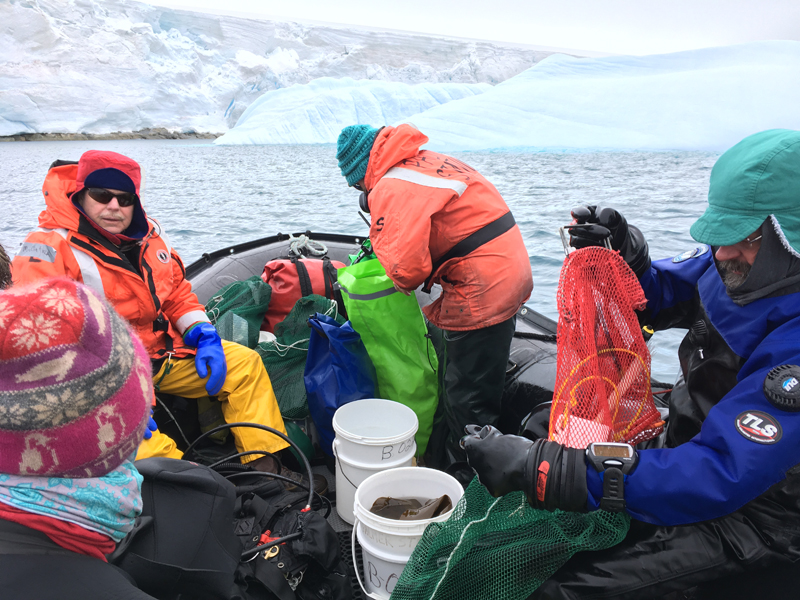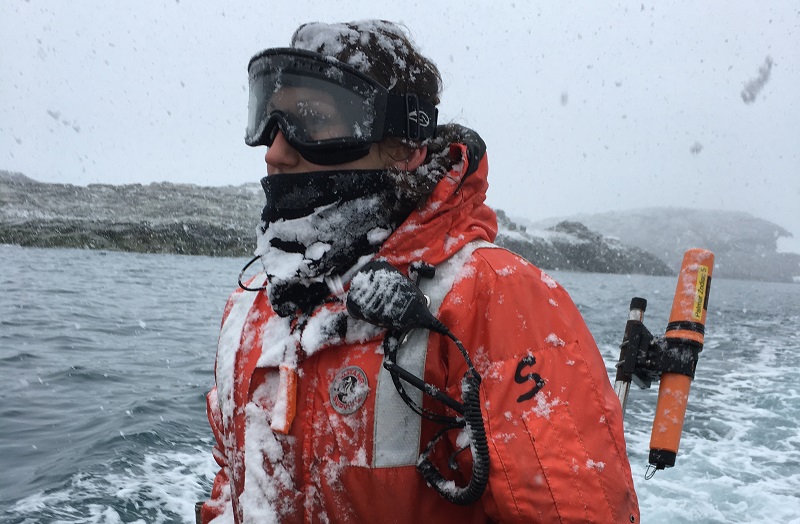
What do bubble-watching, lots of fleece layers, and ski masks have in common?
All are crucial to dive-tending in the Antarctic!
In the last post, Maggie described the cactus sponges and yellow-orange tunicates we collect from underwater and the potential that these organisms have for drug discovery. But, what does this diving activity look like from my point of view, as a non-diver, up in the boat?
There’s a lot of preparation that goes into getting the zodiac and dive gear into the water, as Chuck detailed last week. But, there’s also a lot of preparation that goes into just getting dressed for boat-tending! It took some trial and error, but Michelle and I think we have found the perfect layering combination. We always want to dress for the ‘worst case scenario’, so as the season goes on and the weather gets colder, we may add more layers.
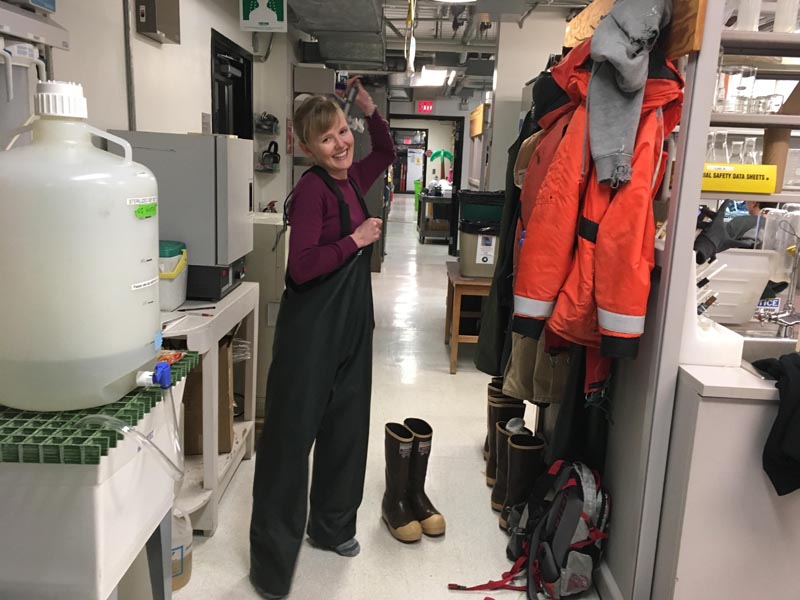
But, for now, as you see me getting dressed for boating in the photo, we wear wool long underwear, not one, but two layers of water-proof overalls, a fleece jacket, two pairs of socks, and gloves. On top of that, we add a float coat, rubber boots, ski googles, and a radio, and stuff foot and hand warmers into our socks and gloves. Of course, as soon as I am dressed I usually decide that I need to use the restroom!
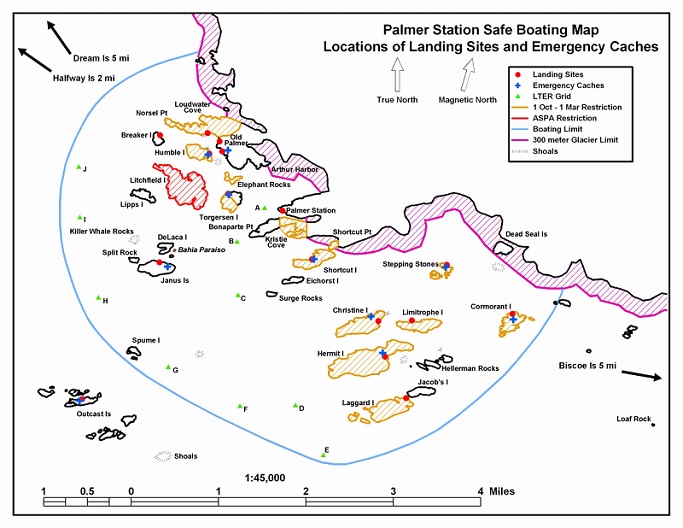
The safe boating area for zodiacs at Palmer Station extends approximately 2.5 miles out from station (Map Credit: https://www.usap.gov/USAPgov/sciencesupport/GIS/images/BoatingMap.gif), and this includes the waters surrounding 16 small islands. We are all well-prepared when we leave for a dive in the boat, but the islands within this area also contain ‘survival caches’ in yellow barrels with tents, food, and potable water in the unlikely event that we needed to wait out foul weather on an island.
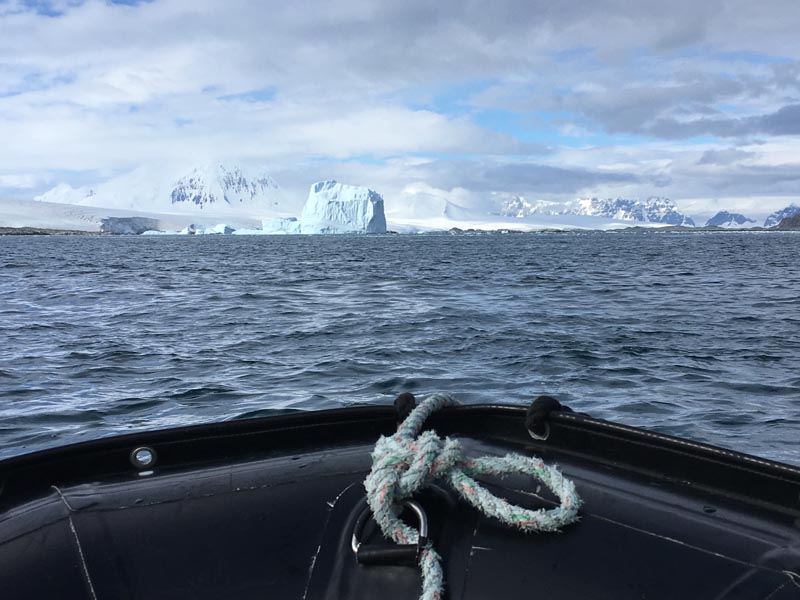
This afternoon’s destination was southeast Bonaparte Point, only a 5-minute drive around the corner from station. Once we arrive at the pre-determined dive location, our task is to help the divers get ready. The divers’ dry suits completely exclude the water, hopefully keeping them warmer than they would be in a wetsuit, but it also means they often need a hand. In the photo below, Michelle is getting ready to help the divers put on heavy, waterproof gloves over their yellow and white glove liners. As you can see, she also keeps everyone in the boat entertained!
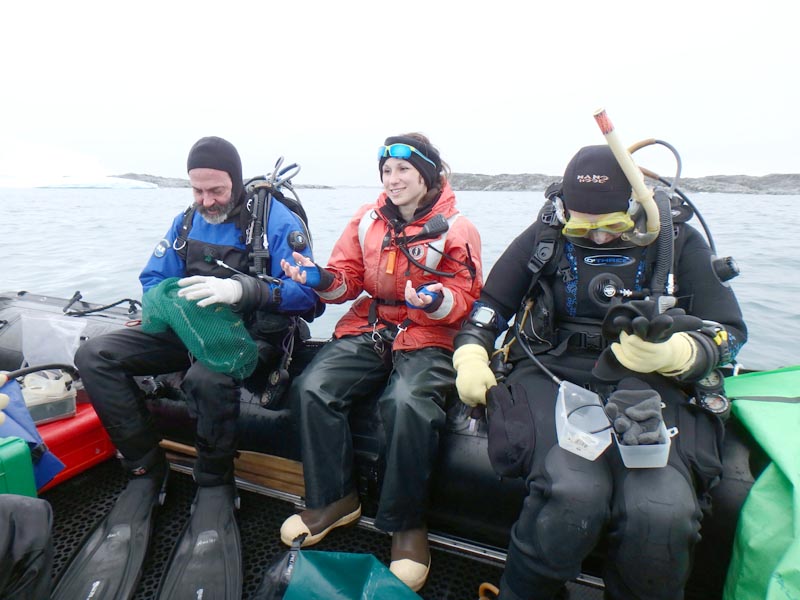
All our dives in Antarctica are ‘live boated’, which means that when divers are in the water at least two dive-tenders are in the boat and the zodiac engine is always on, following the divers' bubbles. You can see the streams of bubbles that we are trying to follow off the left of the boat’s bow in the photo. The boat driver tries to stay within a few feet from the bubbles, and it’s a constant dance of tiny adjustments to keep the bow pointed at the divers and into the wind.
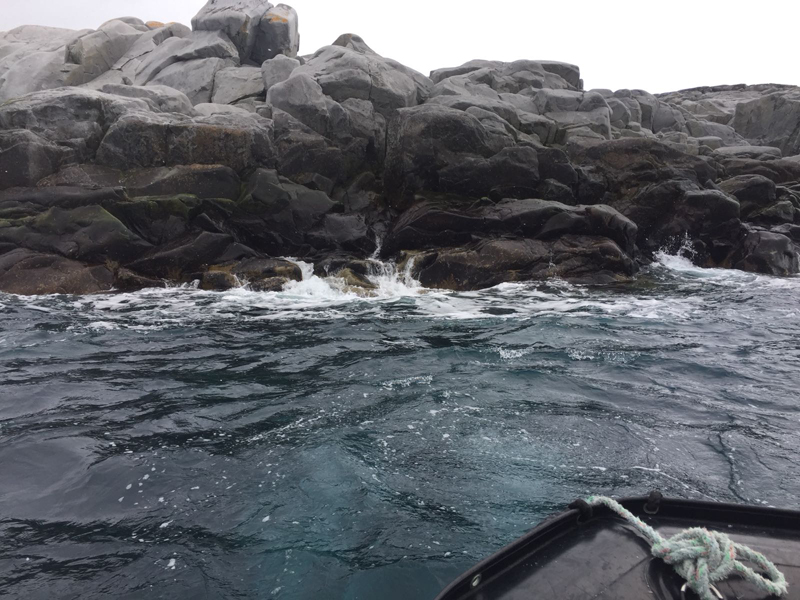
Most dives to collect invertebrates like sponges, tunicates, or seaweed last approximately 30 minutes. When the dive is finished, we place everything from the divers' collection bags into buckets. You can see the large brown alga Chuck has just placed into the white bucket. When everyone – plants, invertebrates and vertebrates – is back in the boat, then it is time to head back into station!
